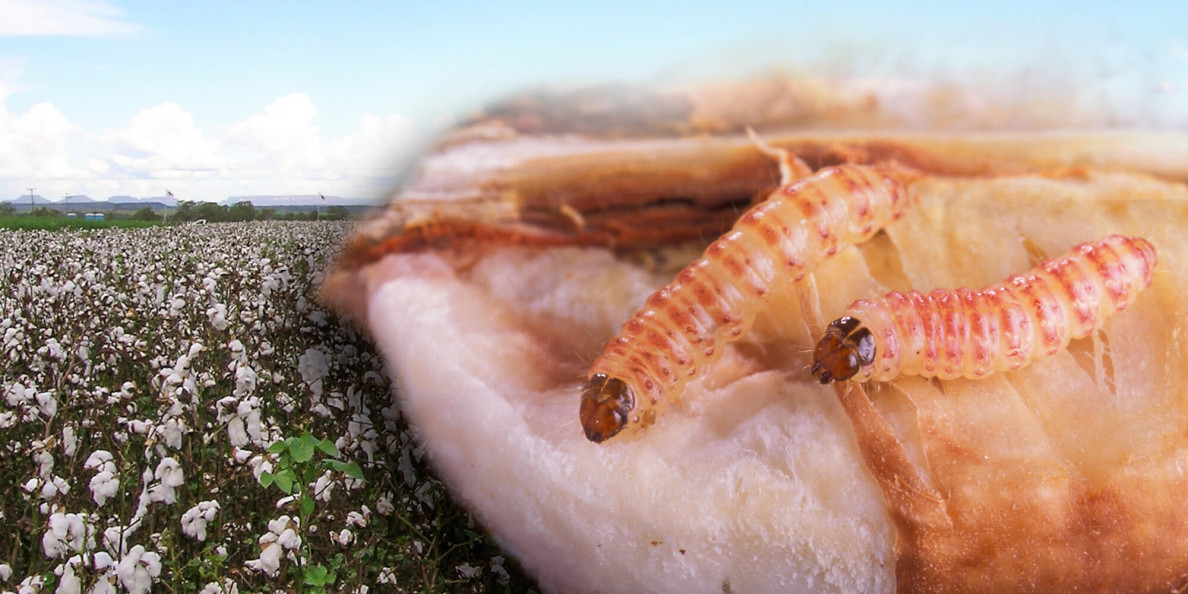In an October 19 announcement in Washington, DC, Agriculture Secretary Sonny Perdue proclaimed that “U.S. cotton is free – after more than 100 years – of the devastating pink bollworm.”
Perdue said the pink bollworm has cost U.S. producers tens of millions of dollars in yearly control costs and yield losses. He stated that “thanks to rigorous control and regulatory activities carried out by USDA, state departments of agriculture, the U.S. cotton industry, and growers, the pink bollworm has been eliminated from all cotton-producing areas in the continental United States. As a result, USDA is lifting the domestic quarantine for pink bollworm, relieving restrictions on the domestic and international movement of U.S. cotton.”
Perdue noted that cotton growers were critical to this success, banding together to carry out a coordinated, multi-state program and shouldering 80% of the program’s cost. That effort, he said, “demonstrates the value of partnership, investment, and putting our research close to and beside the farmers we serve.”
The National Cotton Council (NCC) welcomed the USDA announcement.
During the ceremony, Clyde Sharp, an Arizona grower who co-chairs the NCC’s Pink Bollworm Action Committee with Ted Sheely, a California grower, said, “On behalf of the cotton producers who have battled the pink bollworm most of their career, and those that battled the pink bollworm before us, we thank everyone that has made this day possible. Amazingly, the pink bollworm eradication program relied mostly on insect control measures that were least disruptive to the agro-ecosystem.”
According to USDA, the pink bollworm was first detected in the United States in Hearne, TX, in 1917. By the mid-1950s, the pest had spread to surrounding states and eventually reached California in 1963. In 1955, USDA’s Animal & Plant Health Inspection Service (APHIS) established domestic pink bollworm regulations. At the height of the program, 10 states – Arizona, Arkansas, California, Louisiana, New Mexico, Oklahoma, Texas, Nevada, Mississippi and Missouri – were quarantined for this pest. Many of these infestations were suppressed through cooperative federal, state and industry programs.
By 2003, only Arizona, California, New Mexico and Texas remained under regulation.
Eradication of pink bollworm took years of committed research by USDA’s Agricultural Research Service (ARS) and included planting transgenic cotton, using insect pheromones to disrupt mating, releasing sterile insects to prevent reproduction, and extensive survey. Many of the research findings by ARS became management strategies used by APHIS and cotton producers in their battle against pink bollworm.
NCC President/CEO Gary Adams, who also participated in the ceremony, said the NCC appreciated the united effort of its producer members, the dedication and coordination of APHIS staff, the collective contributions of many scientists, and the federal funding support from Congress that enabled USDA-APHIS to complete this monumental task.
“The pink bollworm, a destructive insect pest of cotton that once required multiple insecticide applications while continuing to reduce yields, is no longer present in U.S. cotton production,” Adams said. “The benefits of this program are shared by society, the environment, and the united producer membership who led this battle to victory.”
Based on information provided by USDA and the National Cotton Council


